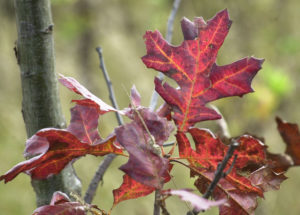
Am early frost speeds up the fall of the leaves and brings a quick end to the fall color. Too much wind or heavy precipitation also brings the leaves down. (Photo credit: La Crosse Tribune Archives)
The season of autumn color is beginning with tints of yellow and orange in southern Wisconsin.
Sunny days and cool nights are the key weather ingredient for brilliant fall colors. The best weather conditions are bright sunny days and cool, but not frosty, nights. A drab autumn has lots of cloudy days and warm nights.
Southern Wisconsin has had above-average nighttime temperatures. Since Sept. 22, the average minimum temperature for southern Wisconsin has been in the upper 40s.
An early frost speeds up the fall of the leaves and brings a quick end to the fall color. Many southern Wisconsin regions have not experienced frost. Of course, a lot of wind or heavy precipitation would bring the leaves down.
Leaves contain chlorophyll and are green because chlorophyll reflects green light more than other colors. Other colors are absorbed by chlorophyll for photosynthesis. During autumn, the green chlorophyll disappears, and we begin to see yellow and orange.
These colors have been in the leaves all along; we can’t see them in the summer because of the chlorophyll. The color orange comes from carotene, and the yellows from xanthophyll. The bright red and purple colors come from anthocyanin pigments, which are made from leftover glucose trapped within the leaves of some trees, such as maples. Brilliant fall colors with bright red and purple colors require conditions in which leaves can make a lot of anthocyanin pigments. These discussions are a function of the weather.
While there may have been more brilliant colors during previous falls, it is still inspiring to walk the woods of Wisconsin.

